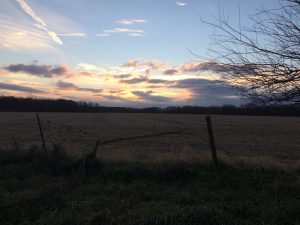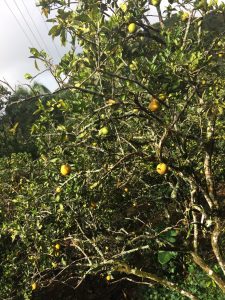Just a couple hundred years ago agriculture dominated Puerto Rico’s economy. In 1930, sugar itself accounted for over 30% of the economic activity passing through the tropical island. High prices of sugar throughout the world markets, as well as countless large private investments of capital, led Puerto Rico to become an international power in the sugar trade. Although, sugar was not the only crop being produced, as coffee and tobacco production also thrived. These three crops combined to employ about 43% of the work force in 1940. However, the same agriculture dominance is no longer present on the island. Currently, agriculture makes up only 0.8% of the country’s Gross Domestic Product and employs a mere 1.6% of the work force. On the other hand, Illinois is currently one of the leading competitors in agriculture in the United States. Around 74,000 farms cover nearly 24 million acres of farmland, or about 75% of the total land area in Illinois. As agriculture is a growing portion of both Illinois’ and Puerto Rico’s economy, we must consider both the costs and benefits of the food systems on both economic and natural systems.
Although it is obvious that Puerto Rican agriculture has been declining for many years, there is hope for the future that it can start to benefit the economy in a more positive manner. Recent technology is allowing farmers to increase their yields and defeat the many pesticides hurting their crops. One example of this that we witnessed was while visiting the Café Gran Batey coffee plantation. Insects have recently taken over many of the coffee beans produced, and are obviously hurting the profitability of hundreds of coffee farmers. To combat this, coffee producers use a pesticide to try and diminish the amount of beans that the insects are able to destroy.
In Illinois, the benefits of the current agriculture system are much more apparent. The agriculture sector alone generates nearly $19 Billion each year to boost the state’s economy. Corn accounts for over half of this total, whole soybeans and dairy also play large roles. Adding to these astonishing numbers, billions of more revenue is collected through ag-related fields, such as manufacturing and agriculture real estate. Much of this success can be connected to the “prime soil” that Illinois is rich with. This soil, combined with a steady climate, will allow Illinois to continue its dominance in the agricultural field for many years to come.
While it is exciting that Puerto Rican agriculture is making a comeback, it can also have many drawbacks. It is obvious why many citizens want to increase the amount of production across the island in the future, as around 84% of the current food intake is imported from overseas. However, adding more agriculture would likely decrease other aspects that are currently fueling the economy, especially tourism. To increase the food production, large amounts of area would need to be converted into farmland. While this seems as if it is a trivial problem due to the massive amounts of forest area currently on the island, much of this area is on hilly terrain where it is nearly impossible to farm many crops. Some of the current land used for tourism would need to be converted into farmable property, lowering the revenue that is currently created in this booming sector of the current economy.
There are not many costs to the extremely valuable agriculture production in Illinois; however, some may point out that the massive amounts of chemical usage are damaging the ecosystem. Many fertilizers and pesticides can be dangerous to the water system, animals, and even humans if used improperly. For example, the chemical runoff has affected many of the lakes rivers and streams, causing harm to hundreds of aquatic species. As solutions to these problems continue to be produced, the agriculture fields in both Puerto Rico and Illinois are both heading in very positive directions.

BioMASS Lab
The Biological Modeling Analysis and System Simulation Laboratory


